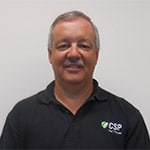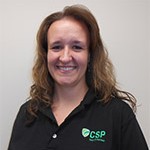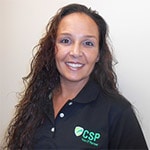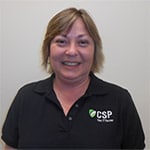Existing CSP Client: (919) 424-2060
SALES: (919) 420-3231
Customers in the market for a banking partner have plenty of choices. Businesses may choose a bank that’s working solely in the commercial market, and individuals may choose an online-only bank or a credit union.

Customers in the market for a banking partner have plenty of choices. Businesses may choose a bank that’s working solely in the commercial market, and individuals may choose an online-only bank or a credit union. Community banks need to make the case for what sets them apart and why customers should choose them over the many other options available. In short, community banks must sell themselves to their customers — convince customers why the community bank is the best bank to work with.
If the question is, “how can we as a community bank convince current and prospective customers that we’re the best option for them?”, the answer probably doesn’t seem like “big data.” That’s the truth of the matter, though. Big data can help community banks position themselves well to understand the needs of their customers, giving banks the information they need to pivot or customize their offerings to meet those needs.
What are some specific ways data can help community banks? Here are three.
Data Helps Community Banks in Raleigh Find Their Most Profitable Customers
Your most profitable customers aren’t necessarily the ones with the most money in the bank. Data can help you evaluate how profitable your customers are by considering the balances of both loans and deposits as well as other profit-making services they may be using. Are you receiving revenue in fees, interchange, or payment services?
All these revenue streams come together to paint a picture of which customers are your most profitable. Used well, the data you gather on your most profitable customers can also help you add to their number, because now you know exactly what paths are leading to that profit.
Data Helps Community Banks in Raleigh Visualize Areas of Potential Growth
With the right data picture, your community bank can identify banking trends common among your customers and visualize the areas where you may see the most potential growth. Good use of data helps you see which banking products have the highest potential for growth and among which customer types.
Data Helps Community Banks in Raleigh Retain Customers and Plug Service Holes
Community banks in Raleigh need to do two big things to retain customers: give them reasons to stay, and don’t give them reasons to leave. First, give them reasons to stay. Your community bank needs to be proactive in finding out what customers want. In many cases you already offer the product they want. Targeting that product to the right customer is key. Highlighting what customers want — even before they know they want it — helps you retain existing customers and attract new ones.
Second, don’t give them reasons to leave. You need to address what your customers feel like they’re missing. Leverage the data you’ve gathered on your customers to target any potential holes in your service offerings. Where possible, offer the desired services or products. Where that’s not feasible, steer customers to a similar offering.
Banks collect plenty of data on their customers just in the course of doing business. Rightly organized and collated, this data can be a powerful tool to help you do all the things described above. Poorly organized (or, worse, not organized at all), this data is worse than useless. You find yourself drowning in the data rather than leveraging it to work for you.
Don’t Underestimate the Human Touch
Some of the best data collection community banks can do is actually quite old fashioned. As a community bank, you’re much better positioned to learn what’s happening in your customers’ lives. As your personal banking clients progress through various life stages (babies, homes, cars, kids’ college, retirement) you can be there for them with customized recommendations based on your knowledge of their situations. The same is true on the business side. Knowing personally that a business client is eyeing expansion gives you a strategic advantage. You can be there with the right service or product at just the right moment.
The Digital Element Is Crucial, Too
While the human touch can go a long ways, community banks can’t afford to neglect collecting and managing digital data. The big banks are doing this and doing it well. Don’t get left behind by failing to modernize in this way.
Gaining meaningful digital data starts with ensuring all your electronic systems are talking with each other in a constructive manner. Often, some degree of system modernization is needed to achieve this. You’ve likely been forced to modernize certain systems to meet customer demands (mobile deposits, for example). No customer is going to directly force you to modernize your database or data collection processes, though, so it’s easy to overlook this area.
The specifics of how to do this modernization vary. There are many factors, including a bank’s geographical location, the current state of its digital tools and data, and the breadth and complexity of the bank’s current systems and products.
The next step for community banks who want to do more to leverage data into profit is to conduct an IT assessment. Bring in a firm that specializes in bank IT and data to get an expert opinion on what upgrades are needed.
When the assessment is complete, your vendor will help you establish a roadmap and timeline for implementing changes. In a short time you’ll have systems and processes in place to collect better data that will help you drive profits at your community bank.
If you’re ready to improve how you harness data at your community bank, contact CSP, Inc. today. Their managed IT services will help you elevate your digital infrastructure and data collection.

Always at your service to provide the highest level of quality support to our customers.

Anthony Firth Client Engineer

“I’m passionate about building and fostering relationships, and finding solutions for success.”

Michael Koenig Client Account Manager

“I help clients stabilize and grow their IT infrastructure so they can focus on growing their core business.”

Josh Wilshire Systems Engineer Team Lead

“I strive to provide the highest level of quality service to our customers.”

Tommy Williams Sr. Hardware Engineer

“I’m driven by the steadfast belief that technology must serve as a business enabler. This mantra has driven 21
Years of successful partnerships.”

Stephen Riddick VP Sales & Marketing

“CSP doesn’t succeed unless your company succeeds.”

Stephen Allen Inventory Manager

“Through my intuition and genuine concern to help others I have built long-lasting relationships with our customers, co-workers and business partners.”

Scott Forbes VP Support Services

“Every day, I work with clients to help plan the future of their businesses.”

Michael Bowman vCIO

“Your IT problems become our IT solutions.”

Mark McLemore Project Engineer

“Managing internal and external operations to ensure that CSP provides quality and reliable customer service .”

Margie Figueroa Business Manager

“Providing quality internal and externals financial support to our customers and accounting support to CSP.”

Katie Steiglitz Accounting Administrator

“Some call me the CEO. I call myself the Cheerleader for an awesome team!”

William B. Riddick Founder & CEO

“CSP is here to assist you with your IT needs.”

Beth Wylie Inside Sales Manager




On What Questions You Need To Ask Before Signing Any Agreement.
"*" indicates required fields

Raleigh IT Support Company and IT Services Provider | CSP Inc.
1310 Nowell Rd,
Raleigh, NC 27607
Existing CSP Client: (919) 424-2060
SALES: (919) 420-3231
Receive email updates and informative marketing materials by subscribing to our newsletter.
"*" indicates required fields